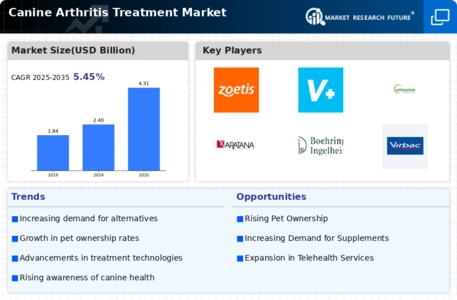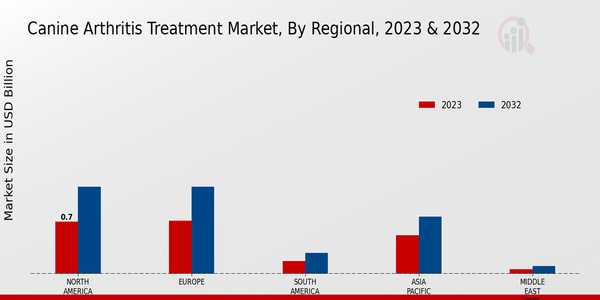Major players in the Canine Arthritis Treatment Market are continuously developing and launching new products to cater to the growing demand for effective and innovative solutions. These leading Canine Arthritis Treatment Market players are actively involved in research and development to enhance their product portfolio and gain competitive advantage.
As a result, the Canine Arthritis Treatment Market is expected to witness significant growth in the coming years. The competitive landscape of the Canine Arthritis Treatment Market is characterized by the presence of numerous key players, each with its unique strengths and strategies.
These leading players are constantly striving to expand their market share through product innovation, strategic partnerships, and mergers and acquisitions. The introduction of novel treatment modalities, such as stem cell therapy and regenerative medicine, is further intensifying the competition within the market.
Zoetis, a leading company in the Canine Arthritis Treatment Market, has established a strong presence through its extensive product portfolio and global distribution network. The company offers a range of products for canine arthritis management, including joint supplements, pain relievers, and disease-modifying antirheumatic drugs (DMARDs).
Zoetis is also actively involved in research and development to develop innovative therapies for canine arthritis. The company's focus on innovation and customer satisfaction has contributed to its strong position in the market.
A key competitor in the Canine Arthritis Treatment Market is Elanco Animal Health, which has gained significant market share through its portfolio of high-quality products and strategic collaborations. The company offers a wide range of treatments for canine arthritis, including non-steroidal anti-inflammatory drugs (NSAIDs), COX-2 inhibitors, and nutraceuticals.
Elanco Animal Health is also recognized for its commitment to research and development, with several ongoing clinical trials investigating new therapies for canine arthritis. The company's strong sales and marketing capabilities have enabled it to reach a global customer base.




















